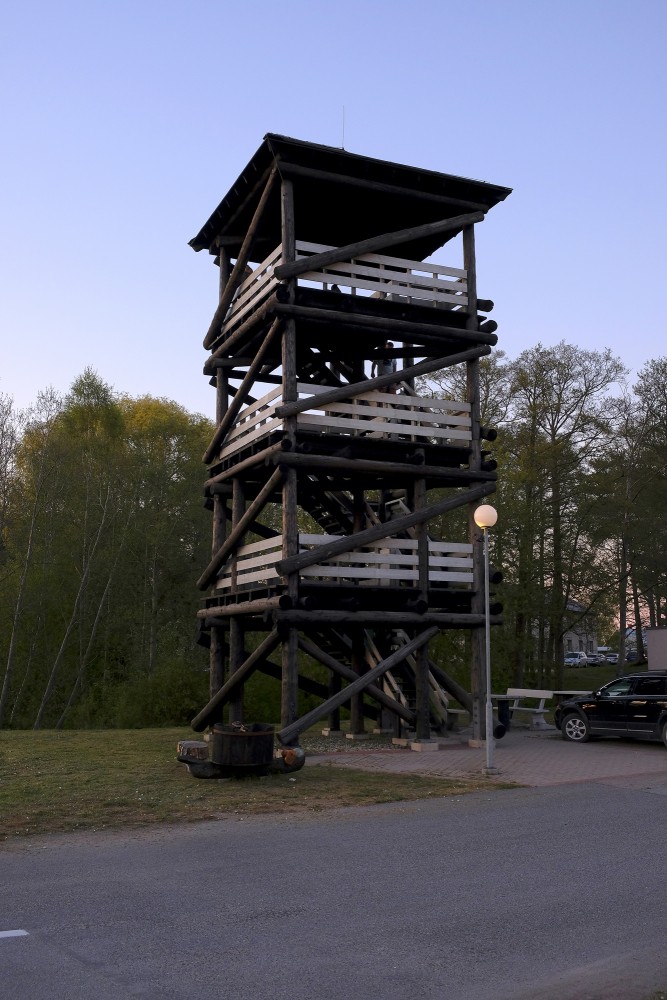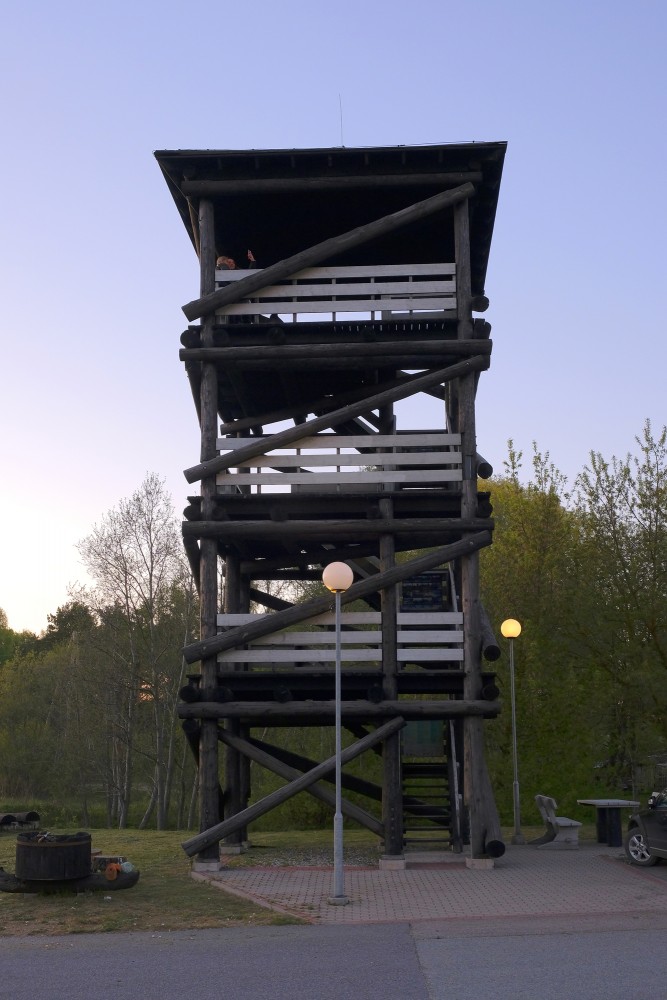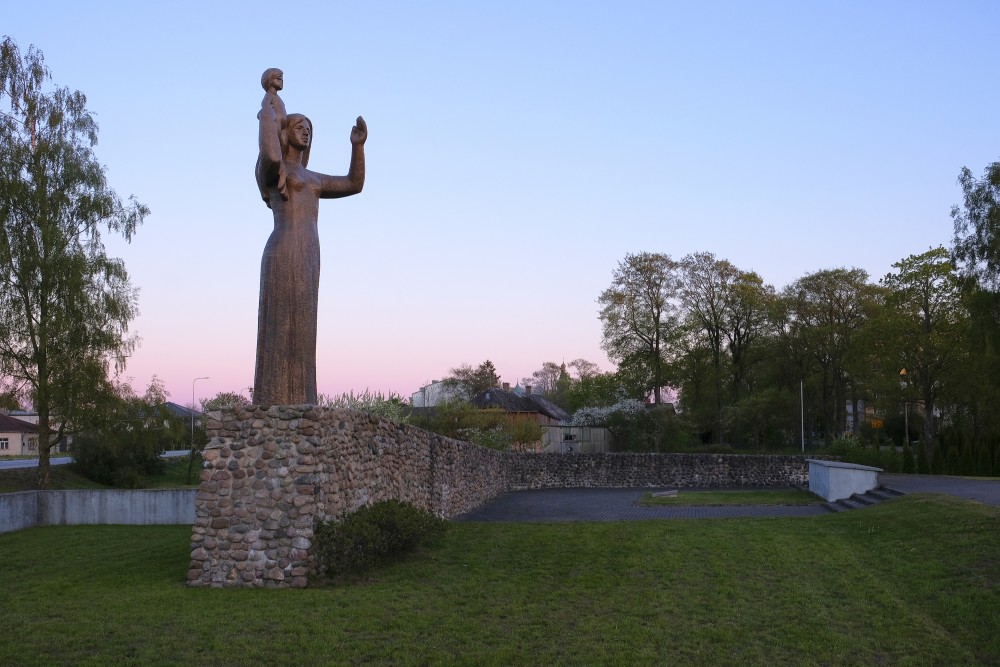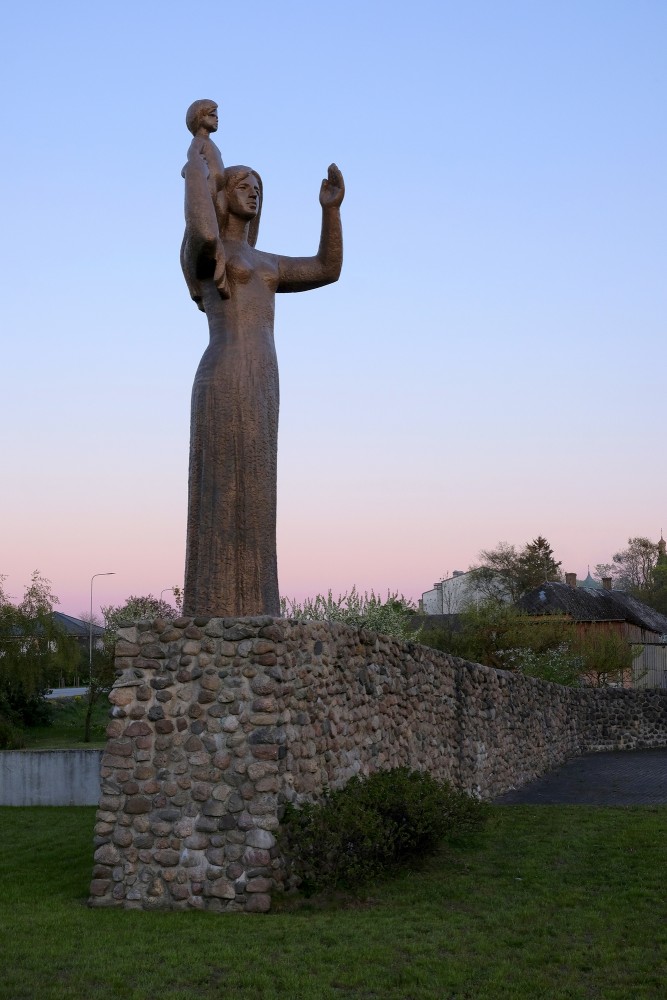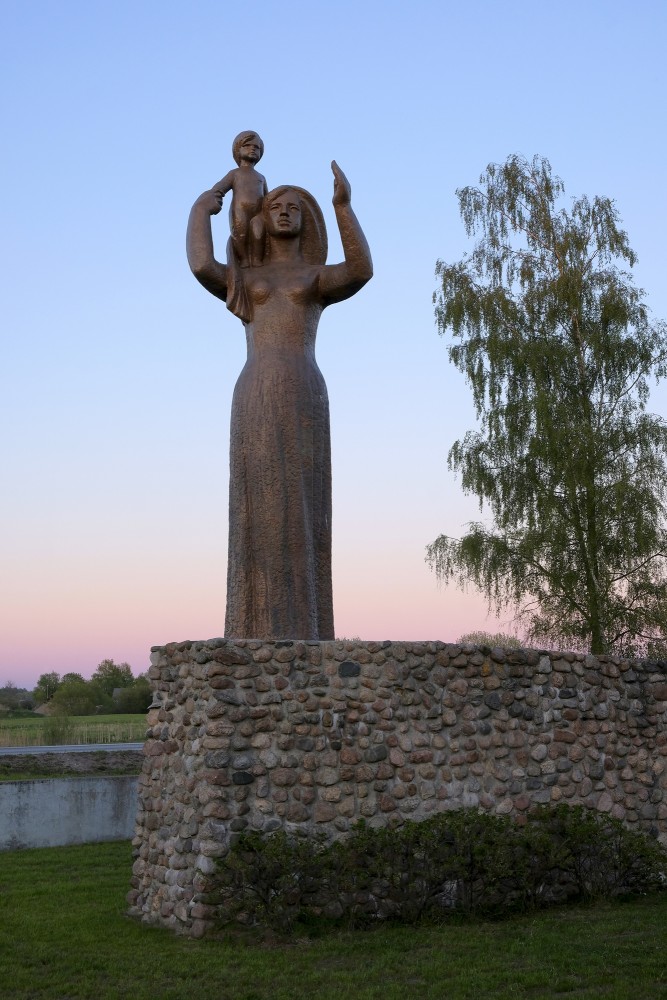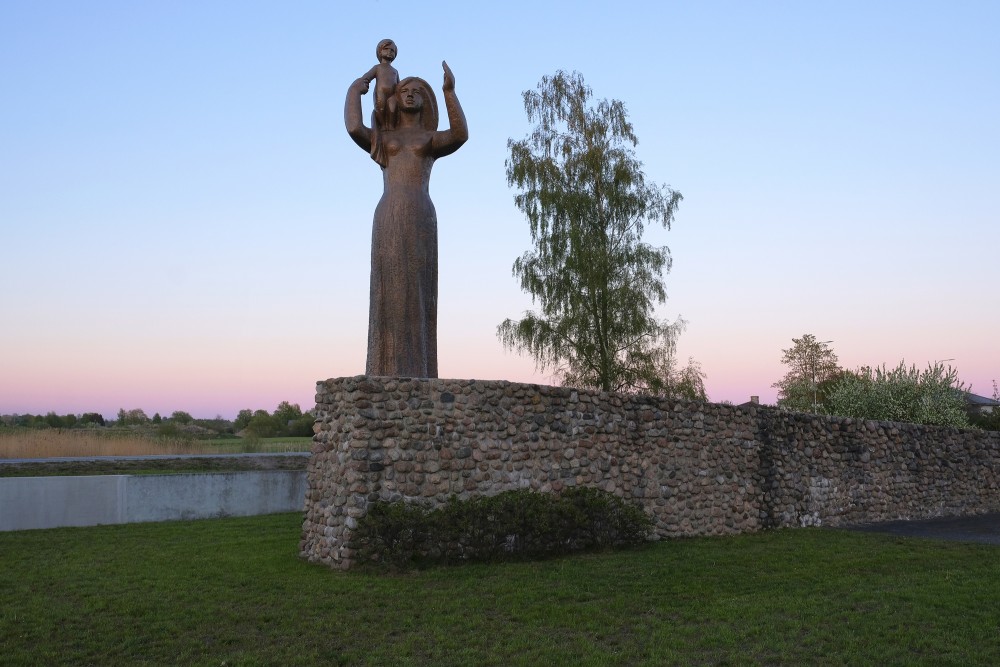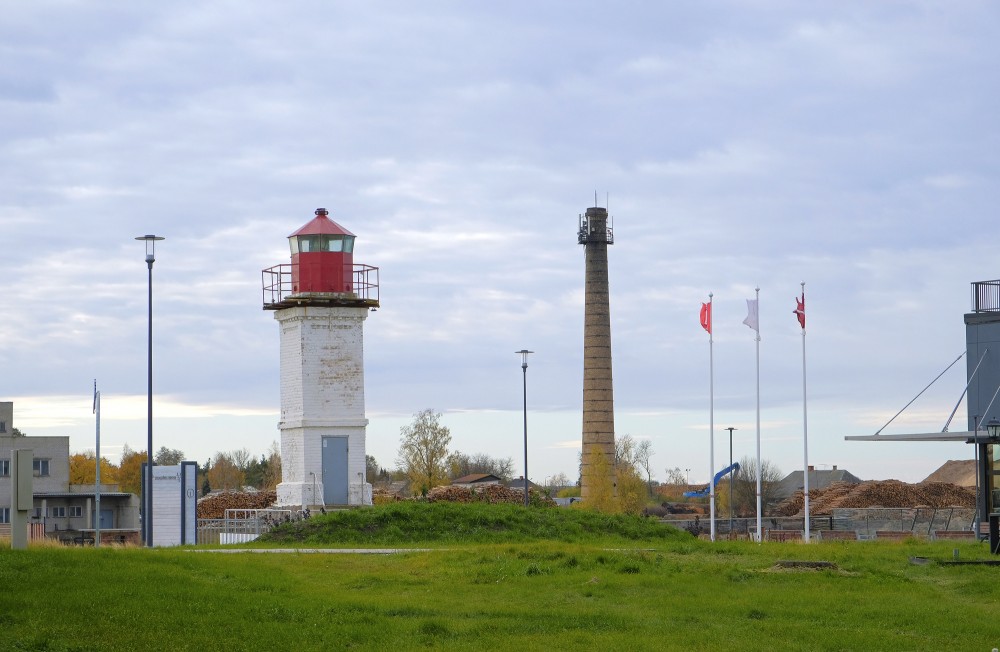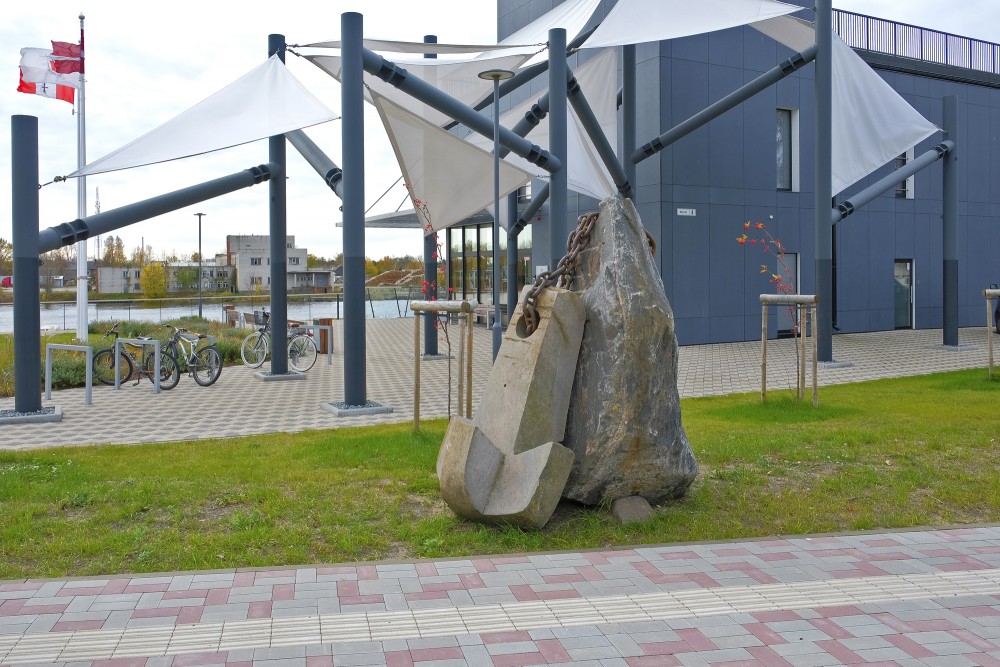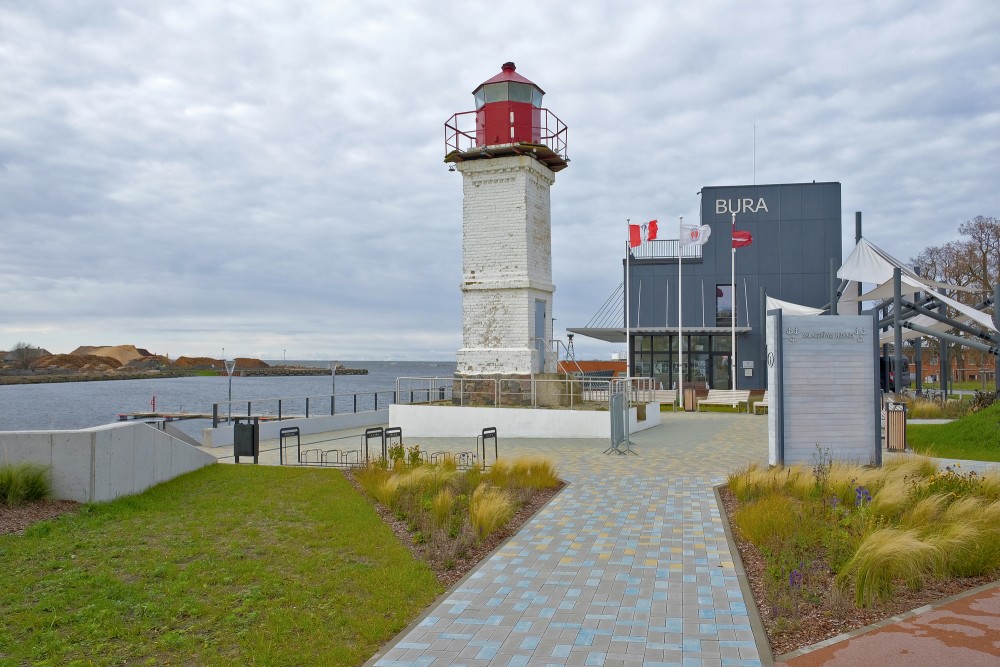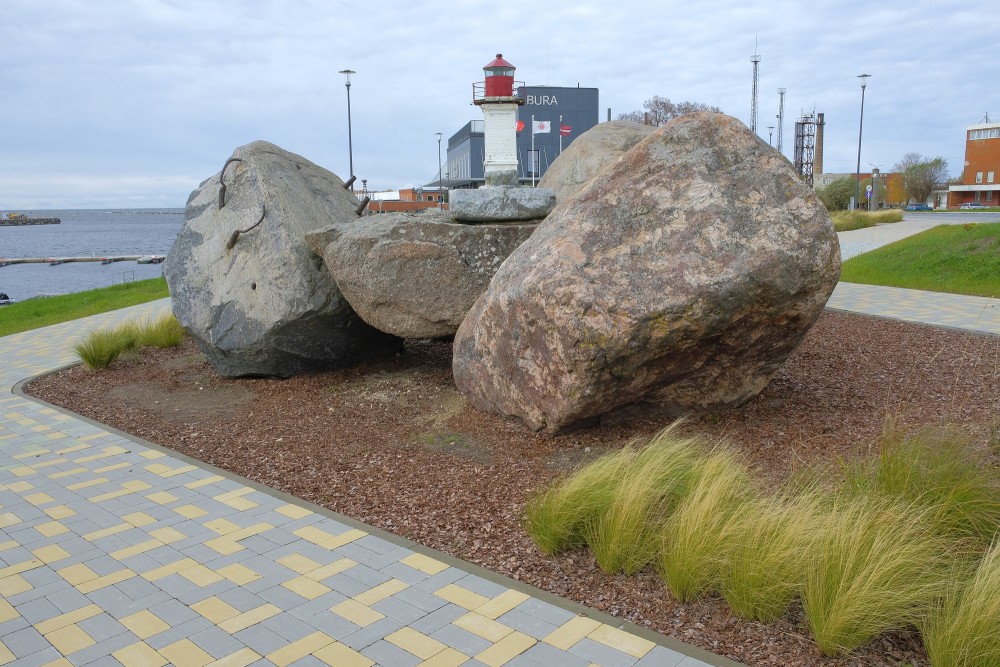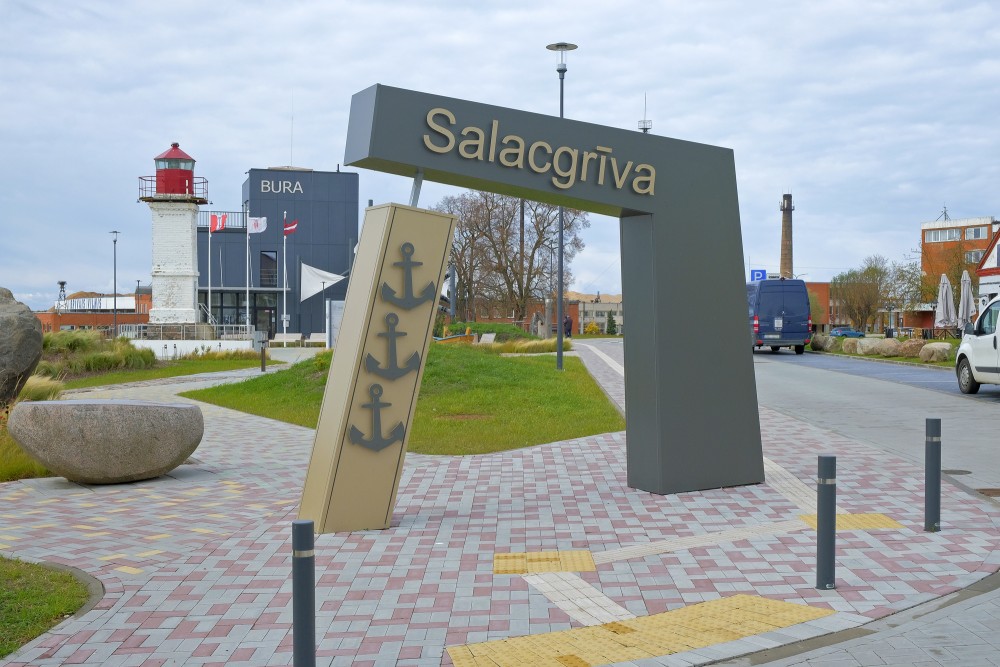Salacgrīva Town, Latvia
Salacgrīva is a town in Salacgrīva Municipality in the Vidzeme region of Latvia. The centre of the area surrounding Salacgrīva is the mouth of Salaca River, and the town's name literally means "Mouth of Salaca" in Latvian. It is famous for hosting Positivus Festival every July since 2007 for 3 days attracting thousands of tourists.
The distance from Salacgrīva to the capital of Latvia – Riga is 103 km, to Limbaži – 50 km, to Valmiera – 95 km. Export of timber, wood-working industry, food production and trade are the most important factors in the economy of Salacgrīva.
| Salacgrīva | |
| Town | |
| Country | Latvia |
| Municipality | Limbaži Municipality |
| Town rights | 1928 |
| Area | |
| • Total | 13.18 km2 (5.09 sq mi) |
| • Land | 12.43 km2 (4.80 sq mi) |
| • Water | 0.75 km2 (0.29 sq mi) |
| • Rural territory | 312.83 km2 (120.78 sq mi) |
| Population (2021) | |
| • Total | 2,579 |
| • Density | 200/km2 (510/sq mi) |
| Postal code | LV-403(2-4) |
| Calling code | +371 640 |
History
The first time Salacgrīva was known as a locality in the early 5th century, when Livonians created their settlement of Saletsa near the mouth of Salaca River. Several centuries later the knight's castle was built in honor of Bishop Albert on the right bank of Salaca River. It was attacked several times during the Livonian war, and for this reason by the end of the 17th century the castle had been severely damaged and it subsequently collapsed. The canal where the vessels sailed around the castle mound can still be seen in Salacgrīva.
The evolution of Salacgrīva went hand in hand with the development of coastal shipping in the Gulf of Riga. To improve the accessibility for larger vessels, the riverbed of Salaca was deepened and a pier of boulders was built in the mouth of the river. Salacgrīva became an important transhipment point for the production of Northern Vidzeme – timber, linen, different crops – for it to be transported to Pärnu and Riga. Around this time, about 200 vessels entered the port, consequently promoting growth of the town and increase in the number of its inhabitants. Therefore, by the end of the 19th century there were more than 70 residential buildings and 40 warehouses. At the beginning of the 20th century, the flow of goods to Salacgrīva decreased, due to the rail infrastructure that was developed in Vidzeme and the fact that the majority of products was transported through the newly built port in Ainaži, which had a directly connection to the railway.
After the declaration of independence in Latvia in the beginning of the 20th century, the social life in Salacgrīva bloomed. With the initiative from H.Eidmanis in 1921, the first secondary school was established in Salacgrīva. On 7 February 1928, Salacgrīva gained a status of a town. Changes in economic life took place under the Soviet rule, when a fish processing plant, whose construction was initially intended for Ainaži, was built in Salacgrīva and the fishing artel "Brīvais vilnis" was established in Salacgrīva. Due to evolution of fishing industry, the port was renovated and an open-air stage was built to celebrate the well-known festival - fisherman's Day (named Sea festival from 2001).
Today, Salacgrīva is a growing provincial town of Latvia. Even today the export of timber, wood-working industry, food production and trade has a huge importance in the economic life of Salacgrīva.
Tourism
After restoration of Latvian independence Salacgrīva municipality Tourism Information Centre was the first tourism information center in Latvia. It started its work on 21 June 1993, but was officially founded in 1994, on November 3. Over the years the tourism center continues to provide travelers with helpful tips for their adventure in Salacgrīva so that they would want to return again and again.
Top 5 countries from which foreign tourists arrive in Salacgrīva are Estonia, Germany, Finland, Lithuania and Russia.
Most popular tourist attractions:
- Positivus Festival - an annual, three-day summer music and culture festival playing a variety of genres, including indie, pop, folk, electronic and more styles in between. Positivus Festival has been awarded the title "Best European Festival" and is mentioned in many shortlists as one of the top music festivals to visit in Europe.
- Lamprey weirs – unique fishing technique with a history of many centuries, which nowadays is used only Salacgrīva. Lamprey weir is a special design footbridge. Every year before the season the weirs are built from scratch, using spruce timber that has been prepared several years earlier. To hold the construction together the fishermen doesn't use nails or screws but specific tiebacks.
- The Treasury – a place where you can see a variety of magazines, books, toys, tableware and interior items from the Soviet period as well as audio, video and camera equipment from the first models.
- The Museum of Salacgrīva – able to view the permanent exhibition "Zutiņš murdā" (Lamprey in the fish pot) showing the fishing history and traditions in Vidzeme seaside, as well as ancient lamprey fishing method.
- Salaca promenade and the lighthouse – Lighthouse was built in 1925. It's a white rectangular shape tower with a red lantern. Nowadays it no longer works but once served to all fishermen to find the way home. The lighthouse was built because of numerous sandbanks near the coast between Salacgrīva and Ainaži. The Gulf of Riga was the most dangerous area for navigation. In order to protect the shores of Salaca from erosion the local residents decided to build a promenade. It was created by bringing stones from the area. Salacgrīva promenade opened in May 2014.
- The stove of ceramics Naborigama – cocklestove or naborigama was built in the summer of 2007. The stove can reach china baking temperatures for more than 1300 degrees. In order to achieve the necessary heat every year in July the stove is heated for a week. After a week of opening the kiln artists gather to see the results of their work of art.
Culture
Library
The Social association of Salacgrīva was established in the town at the end of the 19th century. With the help of the association on 4 August 1902, the library of the Social association of Salacgrīva was founded, which was later moved to the newly built association building, which was constructed in 1912. In the beginning, 300 books of various content could be found there, while later the number of books increased until 700 volumes. In 1957 the library was divided in two parts – Salacgrīva town library was separate from the children library.
Museum
Since 1998, when the Museum of Salacgrīva was established, it has operated as the centre of the history of the region for locals, tourists and history researchers. Materials about fishing and fisheries in the vicinity of Salaca River, the sea coast in Northern Vidzeme, about old lamprey fishing with weirs, the history of Salaca and Svētciems manor houses, on whose lands Salacgrīva developed, about the economic and political life of the town, schools, churches and temples in the vicinity, about well-known locals who have demonstrated great success in pedagogy, science, culture and arts, in business, politics and economy can be found in the archives of the Museum of Salacgrīva.
en.wikipedia.org
